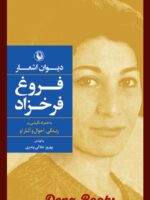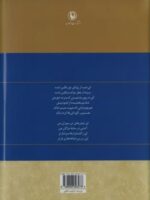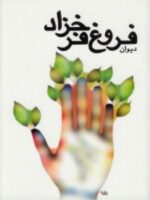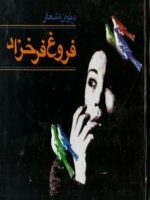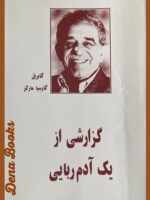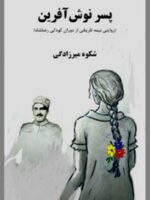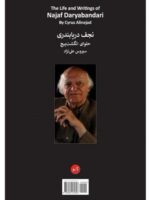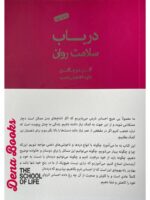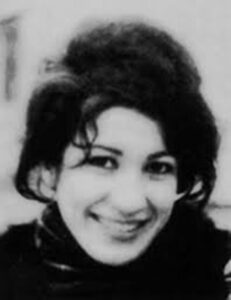
In 1954, a nineteen-year-old poet walked unannounced into the office of the literary editor of Roshanfekr (The Intellectual), one of Iran’s most prestigious magazines. Her fingers were stained with green ink, and she trembled with nerves as she handed over three poems. One of them, the twelve-line “Sin,” described in explicit detail her affair with the magazine’s editor in chief. Different translations give different nuances to the opening of the poem: “I have sinned a rapturous sin / in a warm enflamed embrace” (Sholeh Wolpé), or “I have sinned, a delectable sin, / In an embrace which was ardent, like fire” (Hasan Javadi and Susan Sallée) or “I sinned / it was a most lustful sin / I sinned in arms sturdy as iron, / hot like fire and vengeful” (Farzaneh Milani). Across these variations, there are a few scandalous constants: the heat, the embrace, the pleasure, and the boldly unashamed I. The speaker declares herself as a sinner, but there is no repentance in the poem, no punishment. She is not her lover’s victim, but a joyous coconspirator, exhilarated by her power to arouse him: “Lust enflamed his eyes, / red wine trembled in the cup, / my body, naked and drunk, / quivered softly on his breast” (Wolpé).
The magazine printed the poem. At a time when many Iranian poets wrote under pseudonyms, the author of “Sin” not only used her real name, but her poem appeared alongside her photograph and a short biography, which revealed her to be a married mother of a two-year-old son. It also described her physical appearance, in sexualized terms, drawing attention to her “disheveled hair” and “penetrating eyes.” Here was a young woman confessing to a sexual awakening in the arms of a man who was not her husband, a deliberate “reversal of a thousand years of Persian literature” written by men about their lovers, at a time when autobiographical writing by women was nonexistent in Iran. The biography collapsed any distance between the loving wife and the libidinous poet, implying that this was not a work of imagination, but a report on experience—making readers wonder what their own wives might be getting up to.
Few poetic debuts can have exacted as high a price as Forough Farrokhzad’s. Men in Iran were free to take other wives and lovers, but an adulterous woman was taking her life into her hands—she could be killed for her transgression and her killers barely punished. Even if she escaped violence, she could be punished in other ways, as Farrokhzad would discover. When she divorced her husband not long after, the decision cost her custody of her son, Kamyar. The stress pushed her to a breakdown and suicide attempt, after which she spent a month in a psychiatric institution and underwent electroshock therapy. She was forced to choose, in effect, between her child and her art. The anguished 1957 “Poem For You,” dedicated to her son, ends with the hope that their connection can somehow live on through her poetry: “You will search for me in my words / and tell yourself: My mother, that is who she was.”
Farrokhzad is sometimes called the Persian Sylvia Plath, as she overlapped her in era, style, and untimely death (in Farrokhzad’s case, a car accident at age thirty-two.) Although the two poets did not read each other’s language, scholar Leila Rahimi Bahmany argues that both were tormented by the gulf between their ideal “self-image as artists” and their cultures’ reductive and repressive visions of women. In their poetry, Plath and Farrokhzad register the struggle to hold onto the artistic self under the pressures of marriage and mental illness. Both deploy the ambivalent image of the mirror, a gendered symbol of vanity as well as a deceptive tool for self-examination. In Farrokhzad’s poem “The Forgotten,” the mirror symbolizes the despair of a woman seeking her own identity in a world organized by male desire:
As long as his eyes are not amazed by my face
What use is this beauty to me?
O Mother, break this mirror
What do I gain by adorning myself?
This conflict between appearances and value, between the eyes of the world and the truth of the soul, would mark Farrokhzad’s work and life.
*
A pretty, rebellious child, Forough Farrokhzad was born into an upper-middle-class family in Tehran in January 1935, one of seven surviving children of a strict military-minded father and his much younger wife. She went to a co-ed elementary school, unusual for the time, and then a technical high school, where she studied painting and dressmaking. Her mother was obsessed with dolls, surrounding herself with them in the home and petitioning (unsuccessfully) to be buried with her favorites. Dolls were later to be the subject of one of Farrokhzad’s most powerful poems, “The Wind-Up Doll,” which ends:
Like a wind-up doll one can look out
at the world through glass eyes,
spend years inside a felt box,
body stuffed with straw,
wrapped in layers of dainty lace.
With every salacious squeeze of one’s hand,
for no reason one can cry:
Ah, how blessed, how happy I am!
Like the mirror, the doll evokes the superficial beauty and docility demanded of women in a patriarchal society. The doll’s enforced blindness and silence, the claustrophobia of her lace-trimmed confinement, is made grotesque by the obligation, through it all, to be pleasant and grateful on demand.
The Iran of Farrokhzad’s childhood was a world whiplashing between medieval and modern. Tehran was “a city of mosques and cabarets, designer clothes and chadors.” For women, this era of rapid change was especially disorienting. Just after Farrokhzad was born, the Shah’s pro-Western regime passed a law banning the hijab, and schools and universities began to open their doors to women. But even as the possibilities for women expanded, patriarchal ideas and systems lingered. Marriage was still meant to be the main goal of a woman’s life, although it meant dependence and domestic seclusion. As a teenager, Forough fell in love with her older neighbor, a distant relative of her mother’s, a satirist and cartoonist who worked for the ministry of finance. The couple married over the objections of both families, and Farrokzhad later said “that ridiculous marriage at the age of sixteen destroyed my future life.”
Her first poetry collection, Captive, did not include the incendiary “Sin,” but still spoke openly, and shockingly, of the struggle between artistic freedom and domestic confinement: “O sky, if I want one day / To fly from this silent prison, / what shall I say to the weeping child’s eyes: / forget about me, for I am a captive bird?” The poems are addressed to unnamed men, the captive’s loving jailers, who are at once objects of desire and emblems of imprisonment. In the book’s afterword, she wrote that she expected her poems to be controversial, “[p]erhaps because no woman before me took steps toward breaking the shackles binding women’s hands and feet.” But isolated controversies only build into sensations, moments into movements, through many voices. Women all over the world were beginning to identify that same sense of confinement, that same longing for freedom, even if they did not yet have the words for it. In America a few years later, Betty Friedan would call it “the problem that has no name.” But naming the problem did not change the balance of power between men and women. Farrokhzad dedicated The Wall, her second collection, to her former husband, calling the book a “worthless gift” that she hoped he would receive as a token of her gratitude. If the self-abasing gesture was intended to soften him, it didn’t work—he and his family continued to enforce Forough’s separation from her son, cutting off her visitation rights.
Farrokhzad left Iran soon afterward, scraping together the money to take a cargo plane to Italy and then to Germany, where she studied languages and poetry. The relative cultural freedom she felt over several months in Europe was liberating, and her next poetry collection, Rebellion, shows her laying claim to a bolder poetic identity that fused her experience as a woman with her Persian literary heritage. But it was hard to shake the weight of her scandalous beginnings. When she published a series of articles about her journey to Italy, a thoughtful and self-reflective travel narrative, she found herself once again attacked as a licentious hedonist, even though her articles were hardly a diary of indulgence.
In 1958, missing her own language and people and in need of money, Farrokhzad returned to Iran. Through mutual friends, she met the filmmaker and intellectual Ebrahim Golestan, who offered her a job filing and answering phones at his large studio in northern Tehran. Golestan was married, but a few months after she began working for him, they began an intense relationship that would continue for the rest of her life. Now ninety-seven, Golestan has lived in England since leaving Iran in 1975. In 2017, he broke a fifty-year silence to speak about his relationship with Forough. “We were very close, but I can’t measure how much I had feelings for her,” he told The Guardian. “How can I? In kilos? In metres?” Golestan has often been credited with influencing Farrokhzad’s best poetry and inspiring her interest in film, but he denied this, saying “she had the biggest influence on herself.” Farrokhzad herself once claimed to respect poetry “in the very same way that religious people respect religion,” and Golestan likewise compared her to a “seminary student,” dedicated monastically to her art. “I never saw her in a state of not being productive,” he said.
While she was working at Golestan’s studio, Farrokhzad developed the project that would result in her short 1962 documentary, The House Is Black, made in collaboration with a leprosy charity. The film would prove transformative both creatively and personally. After an initial visit to a leprosarium in Tabriz County, she returned three months later with a five-man crew and lived among the residents for twelve days, observing and capturing their lives on film. Her immersion in the colony was such that she adopted a young boy, Hossein Mansouri, while she was there (he now lives in Germany and has translated her poetry into German.) The twenty-two-minute film (available on YouTube) is intimate and unflinching, reflecting Farrokhzad’s interest in states of imprisonment and the lives of social pariahs. In long takes training the camera on faces of all ages, she invites the viewer to see the people instead of their condition. The film opens with the image of a veiled, disfigured face reflected in a mirror edged with flowers, a continuation of the mirror imagery that appears throughout Farrokhzad’s poetry. The voice-over narration poses philosophical and religious questions about the nature of ugliness, before giving a more straightforward account of the symptoms and treatment of leprosy. Emphasizing that the disease is made worse by poverty and can be managed by hands-on care, the voice-over plays over uncomfortable images of patients undergoing treatment. But then the visuals change in tenor, showing us physical therapy, children and babies playing, music and celebrations, and women preparing food, brushing one another’s hair, and applying heavy kohl. Through the tight focus on a small group of people in a strange, isolated world, Farrokhzad manages to gesture at the much larger story of how societies function, how people thrive in communities, and how beauty can grow out of deprivation.
The poetry collection she published two years later, titled Another Birth (Reborn in some translations), is dedicated to Golestan and is considered, by critics and by Farrokhzad herself, to be her most accomplished. In this collection, her intensely personal gaze widens to encompass society at large—“the center of gravity shifts,” according to one critic. The long poem “O Bejeweled Land!” takes its title from a patriotic song, and satirizes government bureaucracy and the reduction of human life to a name and number on an ID card: “long live number 678, precinct 5, Tehran.” Everything is reduced to this number 678: poets, nightingales, plastic roses, “faddish electric kebab grills,” Rolex watches, and “678 lungs-full of air smelling / of shit, garbage, and piss.” In an interview, Farrokzhad explained her impulse to present an unvarnished picture of the world around her. “When I want to talk about a street which is full of the smell of urine, I can’t put a list of perfumes in front of me and choose the most fragrant one to describe this smell. This is deceit, which man first practices on himself and then on others.”
The year before her death, Farrokhzad wrote to Golestan to tell him, with a kind of ironic prescience, “I love you to an extent that I am terrified what to do if you disappeared suddenly. I’ll become like an empty well.” In the end, it was Farrokhzad who disappeared, killed in a car accident on the way home from her mother’s house on February 14, 1967. Her work survived, passed around in secret after the 1979 revolution, when it was banned and then heavily censored. In recent years, her status as a rebel icon in Iran has only risen. And, as with Plath, iconic status can lead to distortions, which Farrokhzad’s biographers and translators continue to untangle, trying to find a truer reflection of this remarkable poet.
(From: The Paris Review)


